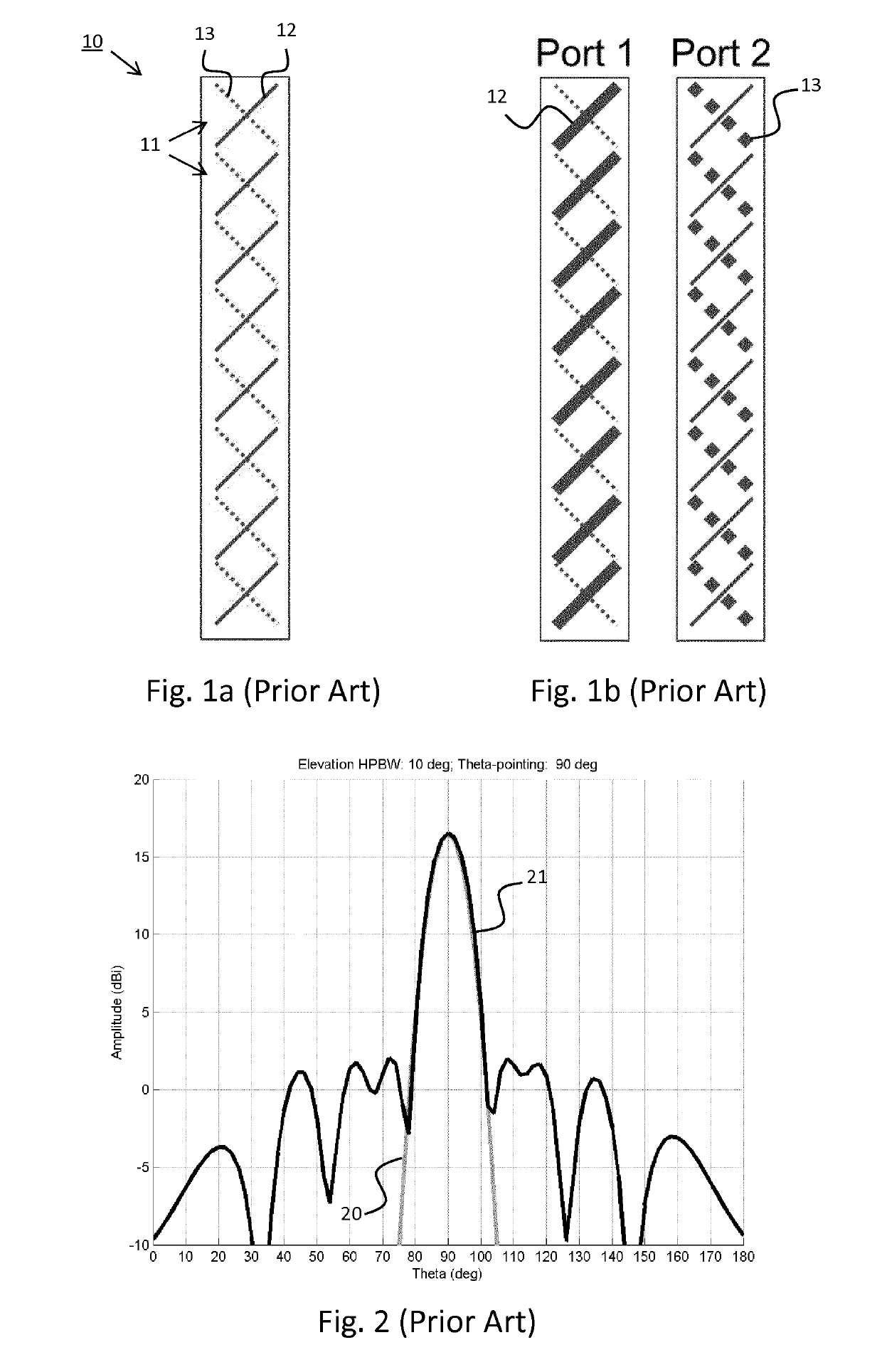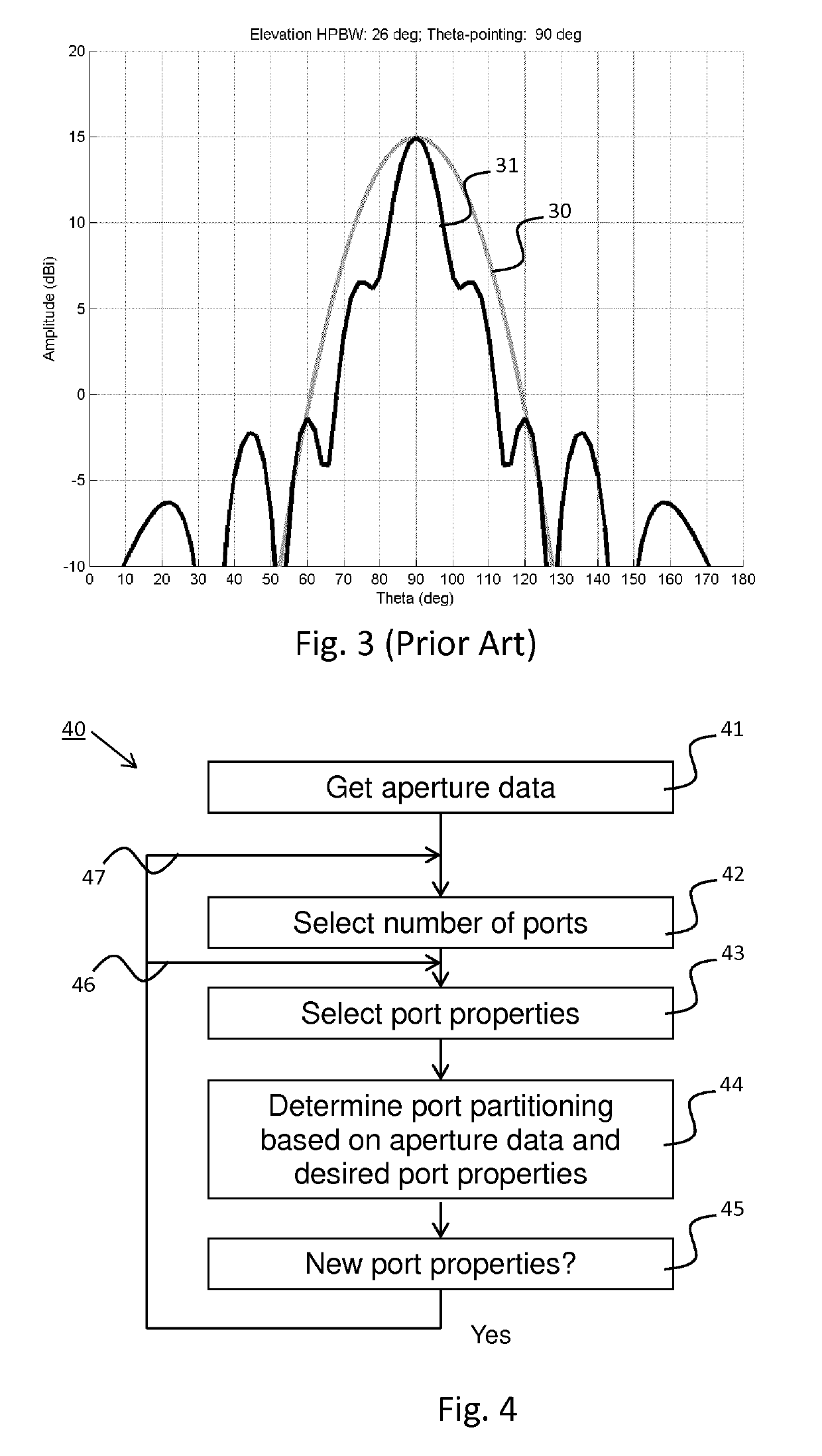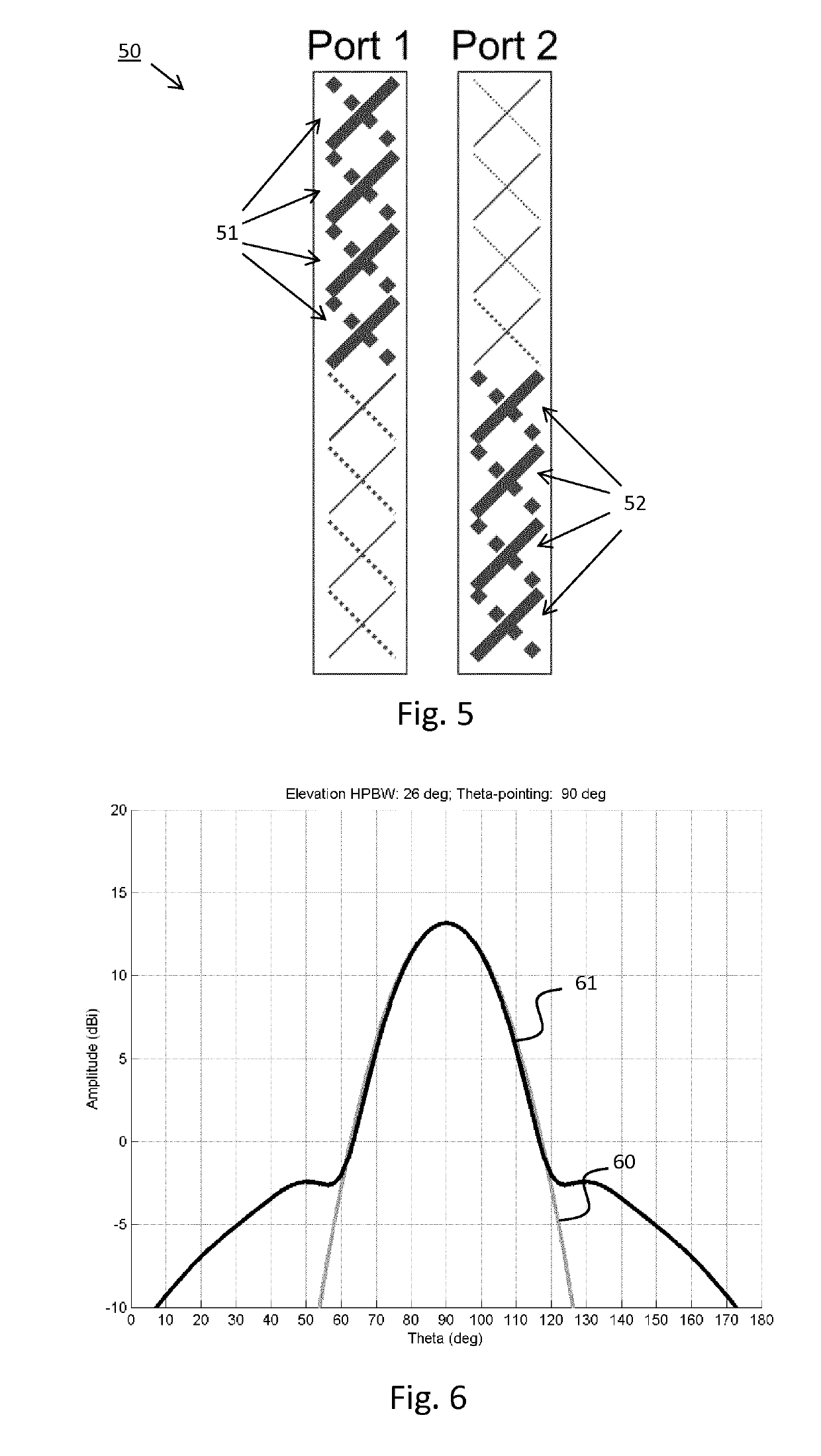Method for beamforming a beam using an active antenna
a beamforming and active technology, applied in the direction of individually energised antenna arrays, polarised antenna unit combinations, polarisation/directional diversity, etc., can solve the problems of difficult and sometimes even impossible creation of wider beams with this conventional techniqu
- Summary
- Abstract
- Description
- Claims
- Application Information
AI Technical Summary
Benefits of technology
Problems solved by technology
Method used
Image
Examples
example 1
[0069]An antenna with 8 dual polarized subarrays, here with only 1 dual polarized element per subarray. BWreference (HPBW)=11 degrees when feeding all antenna subarrays with unit amplitude and zero phase.
[0070]Target beamwidth is 13 degrees HPBW, which means:
[0071]n=1113*8≈6.77=>BFindex=N-nN=8-6.778≈0.15<0.3
[0072]Therefore SPBF is selected with n=7, indicated by 7+0 (SPBF) in FIG. 11.
[0073]If beamforming index is ranging from 0.3-0.5 (0.3index<0.5) then single polarization beamforming using “n” first antenna subarrays or dual polarization beamforming using “n” first antenna subarrays and “N−n” second antenna subarrays is selected based upon which configuration gives as low sidelobes as possible
example 2
[0074]An antenna with 8 dual polarized subarrays, here with only 1 dual polarized element per subarray. BWreference (HPBW)=11 degrees.
[0075]Target beamwidth is 18 degrees HPBW, which means that for a one-dimensional antenna with 8 dual polarized antenna subarrays:
[0076]n=1118*8≈4.89=>BFindex=N-nN=8-4.898≈0.39>0.3and<0.5
[0077]SPBF using n+0, i.e. 5+0, subarrays will result in a maximum sidelobe level of approximately −10 dB (FIG. 11), and DPBF using n+(N−n), i.e. 5+3, subarrays will result in a maximum sidelobe level of −11 dB (FIG. 12). Therefore, DPBF with 5+3 antenna subarrays is selected to be used.
example 3
[0078]An antenna with 8 dual polarized subarrays, here with only 1 dual polarized element per subarray. BWreference (HPBW)=11 degrees.
[0079]Target beamwidth is 17 degrees HPBW, which means that for a one-dimensional antenna with 8 dual polarized antenna subarrays:
[0080]n=1117*8≈5.18=>BFindex=N-nN=8-5.188≈0.35>0.3and<0.5
[0081]SPBF using n+0, i.e. 5+0, subarrays will result in a maximum sidelobe level of approximately −12 dB (FIG. 11), and DPBF using n+(N−n), i.e. 5+3, subarrays will result in a maximum sidelobe level of −9 dB (FIG. 12). Therefore, SPBF with 5+0 antenna subarrays is selected to be used.
[0082]If beamforming index is in the order of, or larger than, 0.5 (BFindex≳0.5) then dual polarization beamforming using equal number of first antenna subarrays and second antenna subarrays is selected.
PUM
 Login to View More
Login to View More Abstract
Description
Claims
Application Information
 Login to View More
Login to View More - R&D
- Intellectual Property
- Life Sciences
- Materials
- Tech Scout
- Unparalleled Data Quality
- Higher Quality Content
- 60% Fewer Hallucinations
Browse by: Latest US Patents, China's latest patents, Technical Efficacy Thesaurus, Application Domain, Technology Topic, Popular Technical Reports.
© 2025 PatSnap. All rights reserved.Legal|Privacy policy|Modern Slavery Act Transparency Statement|Sitemap|About US| Contact US: help@patsnap.com



